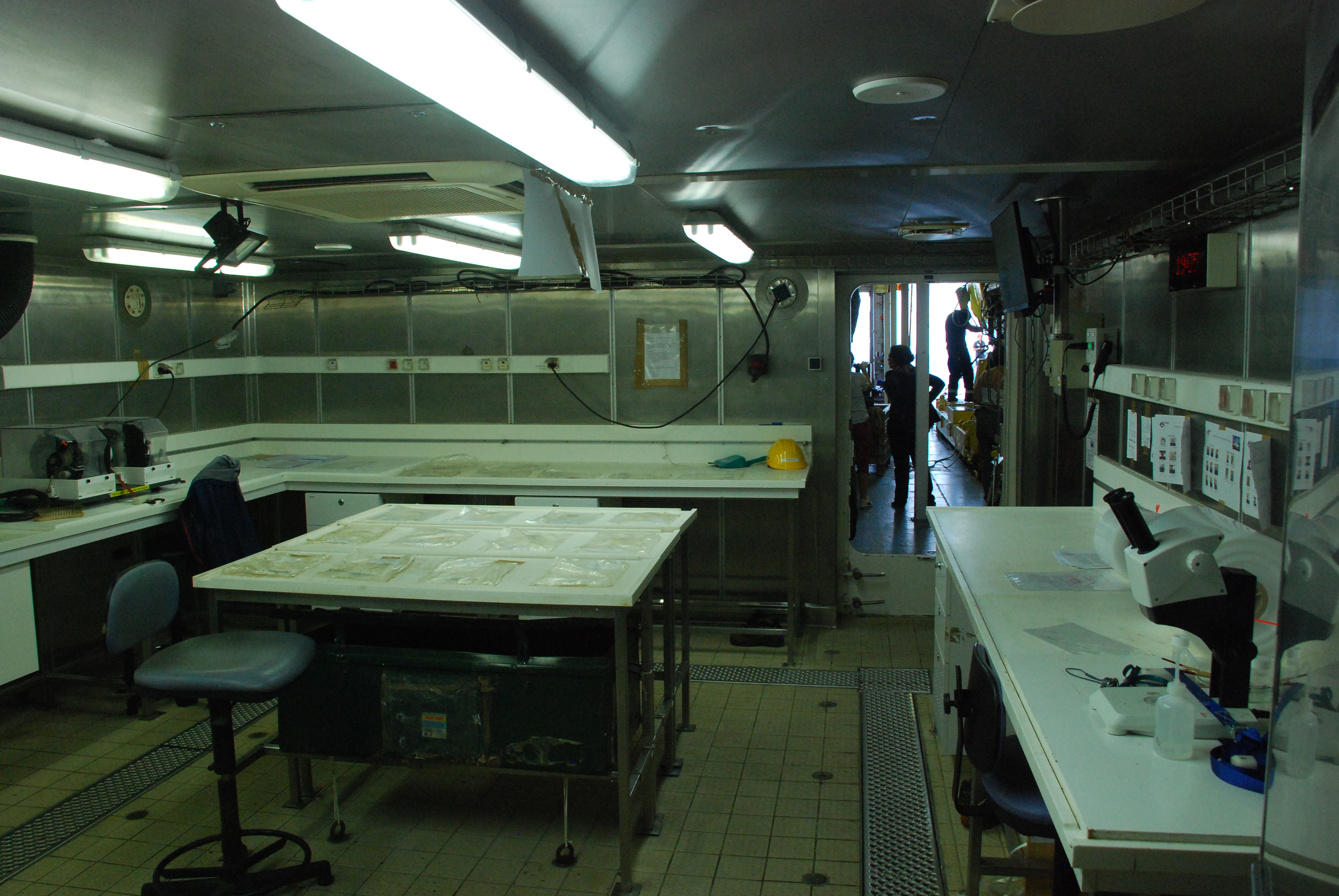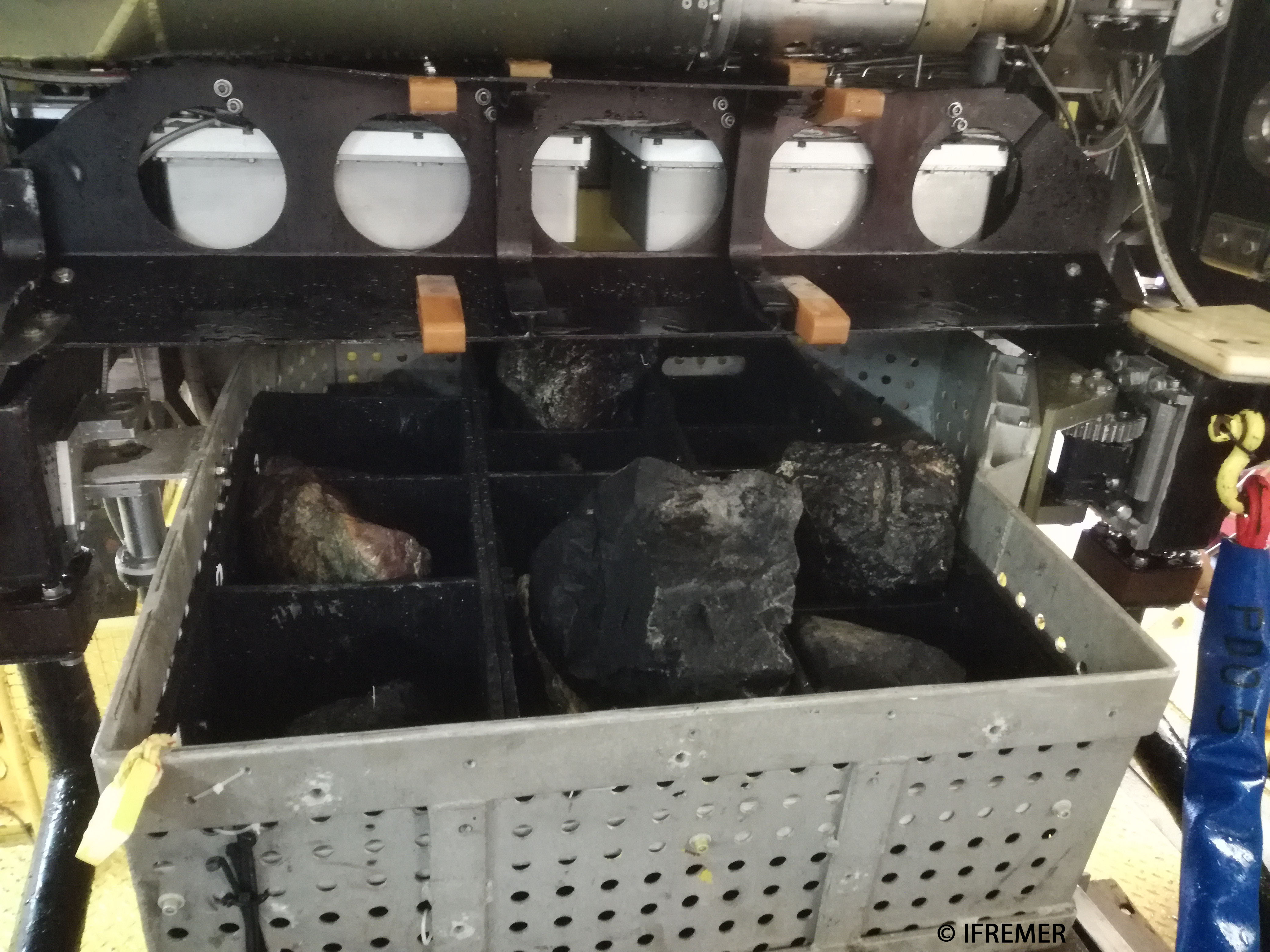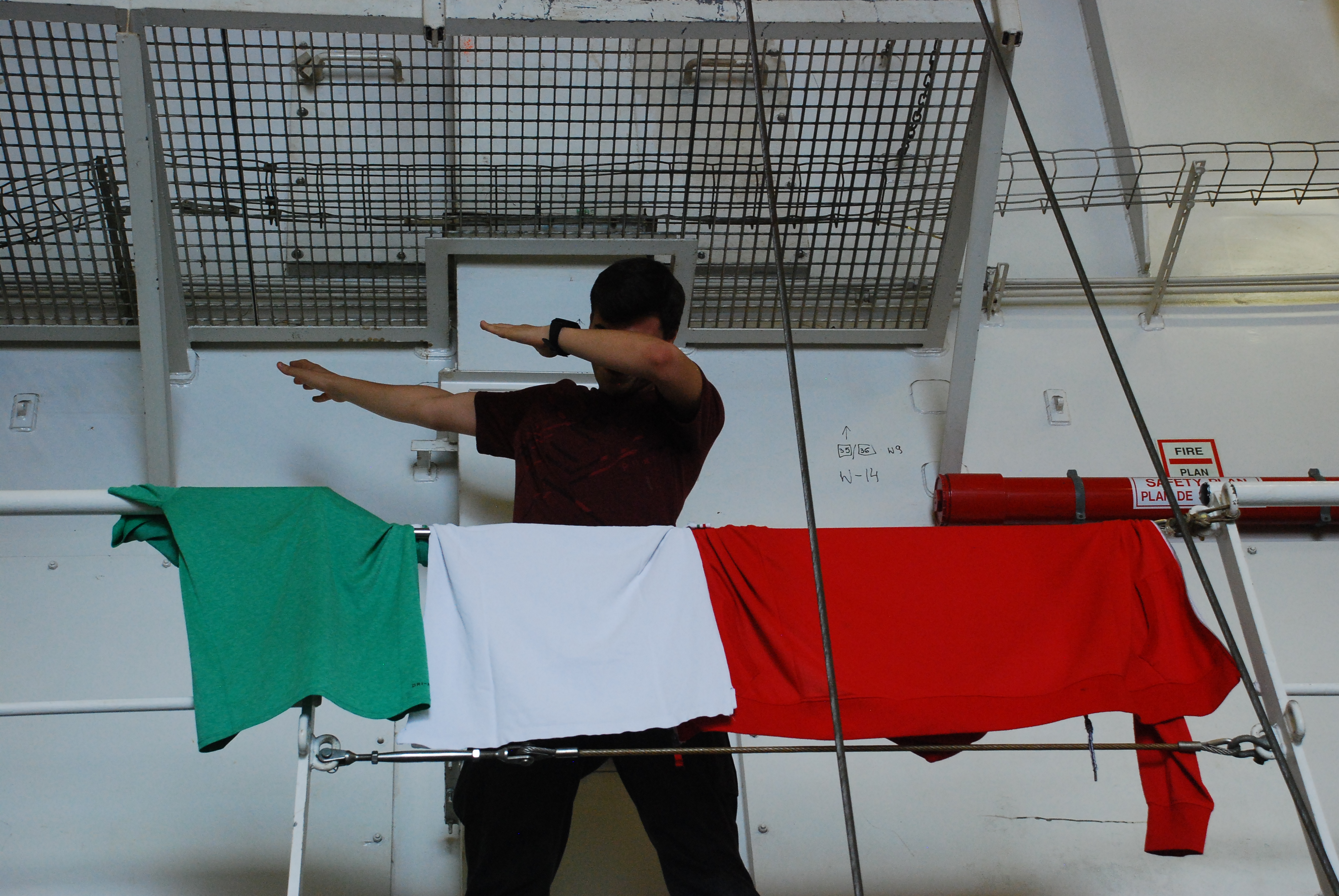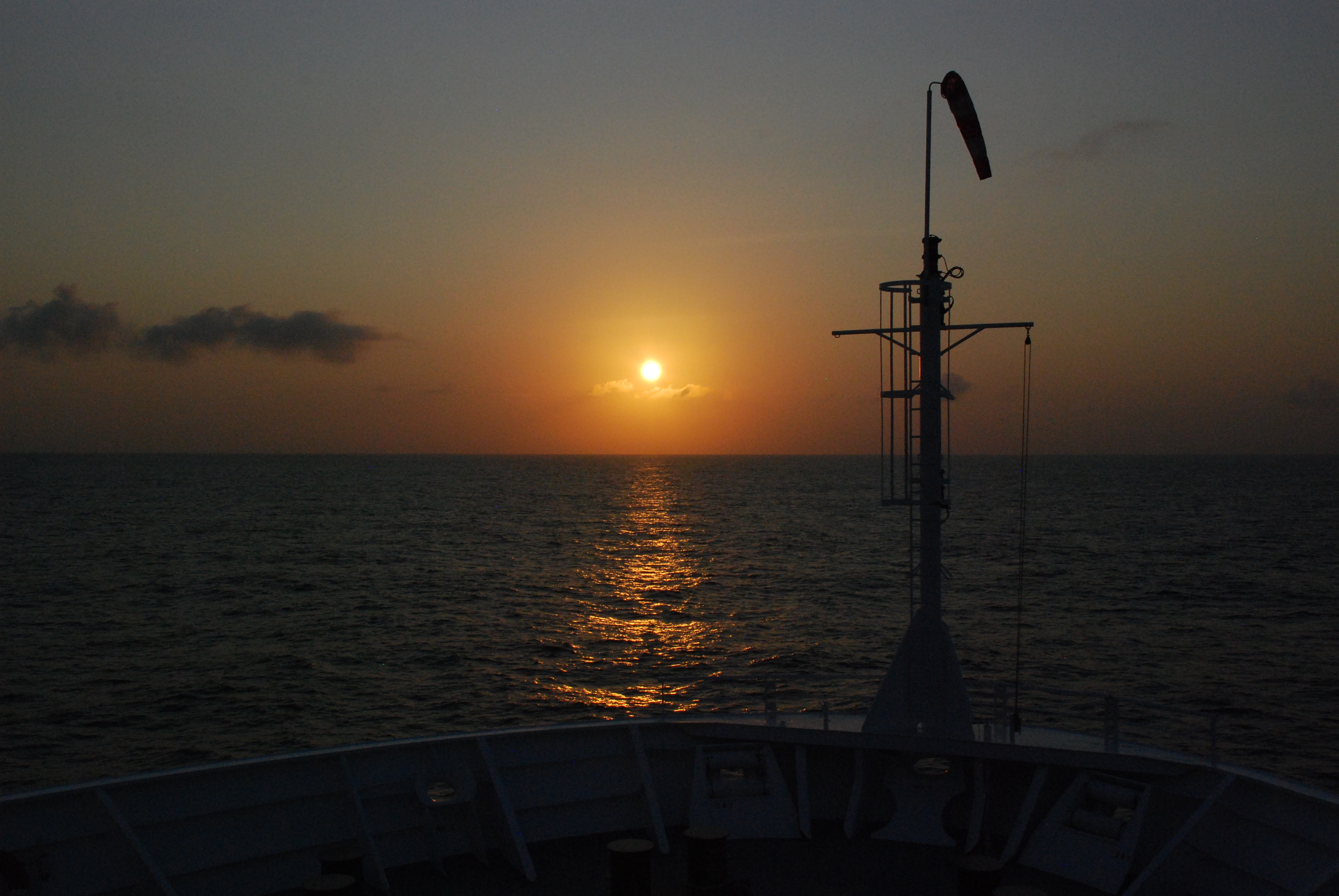A big “hello to everyone” from Fabio! I am here to tell you about the second week on the ship. I will show you what happens in the laboratories during and after the Nautile dives.
Before the beginning of the dives, three different working groups were formed to work on the description of the rock samples. Each group is made of four persons: a group “captain”, a “second in command officer” and two young “sailor“ students that will rotate within the three groups to allow everyone to learn as much as possible from this experience.
Monique leads the team of the igneous petrologists: their role is to give a name to the rock based on the primary mineralogy and to find out the original composition if the rock is altered or metamorphosed.
Marie-Alix leads the team of the structural geologists, of which I was part this week together with Azam; they have the task of observing all the fragile deformations (fractures and mineral veins) and ductile deformations (particular internal structures) to define the texture of the rock.
Finally, there is the group led by George, the team of metamorphic petrologists, which describes the alteration and metamorphic minerals.
All together, we compile an Excel document that summarizes all the characteristics of the rock samples, the peculiarities and whatever extra information is worth to note. This intense work takes up the whole day and each group takes at least 3 hours for its description. But everything must be finished by 6pm when the new load of rocks arrives from the next dive!
At this point, it is time to put everything away and set up a real battle field with the absolute protagonist Anna: for twenty minutes scissors, envelopes, markers and rocks fly into the laboratory to make it ready to welcome a new series of samples.
The rocks are packed one by one and labelled with an adhesive sheet on which there is a number and a bar code that univocally identifies the rock. This number is the IGSN code that stands for International Geo Sample Number, an alphanumeric code that uniquely identifies samples for the international community in the System for Earth Sample Registration (SESAR). http://www.geosamples.org/igsnabout
The samples are then put inside special boxes, one or more for each dive. The laboratory tables are cleaned and the working numbers for the incoming samples are laid out onto the tables. Our working number is composed by the abbreviation “SMA” (for SMARTIES, the name of our expedition) followed by the consecutive number of the Nautile dives (the Nautile from the beginning of its working life has performed 1957 dives, so our expedition started with dive number 1958) and consecutive sample number.
At the front side of the Nautile there is has a bucket divided into sections in which the mechanical arms deposit the rocks collected during the dive. As already explained by Léna, immediately after exiting the submarine the scientist must help unloading the samples from the box indicating the right order in which they were sampled along the navigated profile onto the seafloor.
At this point, Anna and I take care of measuring the size/weight of the samples and some first order observations on the alteration and Fe-Mn coating of each sample and Cedric takes pictures before the samples are cut.
Finally, we go for dinner with a hunger comparable to a week of fasting (there is no proper “merenda” time on the boat) and then out on the deck of the ship to watch the spectacular sunsets over the ocean that only these latitudes can offer.
Greetings to all and stay tuned!












